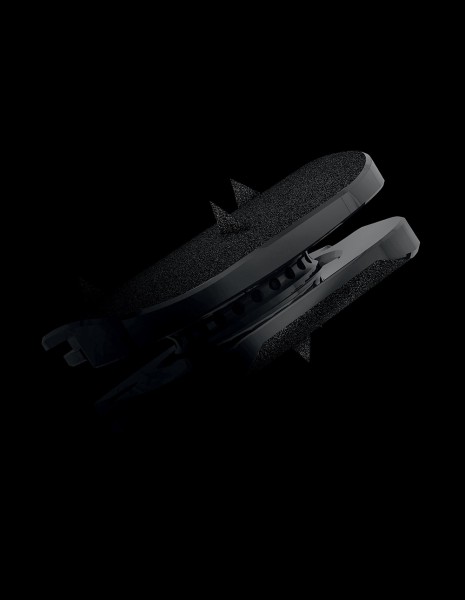
Radiographic outcome and adjacent segment evaluation two years after cervical disc replacement with the BAGUERA® C prosthesis as treatment of degenerative cervical disc disease.
Radiographic outcome and adjacent segment evaluation two years after cervical disc replacement with the BAGUERA® C prosthesis as treatment of degenerative cervical disc disease. Journal of spine issn: 2165-7939. Fransen et al., j spine 2016, 5:2.
Abstract
Introduction: In many cases, cervical arthroplasty can avoid adjacent segment degeneration, by preserving the mobility of the operated level. In this paper, we present and analyze the radiological results of a cohort of patients who underwent cervical disc arthroplasty, with the Baguera®C cervical disc prosthesis.
Material and methods: 99 patients and a total of 123 prostheses were included in a retrospective analysis of radiographic images, based on a registry type data collection, with a two-year follow-up (FU). The radiological data was independently assessed for the range of motion, disc angle, disc height at the operated level and at the adjacent level, and for heterotopic ossifications (HO).
Results: At the operated level, the range of motion (ROM) decreased from 10.2° preoperatively to 8.7° (nonsignificant) after two years in the one level total disc replacement (TDR) group, from 9.8° to 9.1° (non-significant) in the two levels TDR group. The motion of the upper FSU changed from 10.6° preoperatively to 13.5° after two years in the one level TDR group, from 11.6° to 10.9° in the two levels group.
The disc height at the level of the operated FSU changed from 4 mm preoperatively to 7.1 mm after six weeks and 6.5 mm after two years for the one level TDR. The disc height at the level above the highest operated FSU changed from 4.24 mm preoperatively to 4 mm after six weeks and 4.2 mm after two years for the one level TDR, from 4.5 mm to 5.4 mm (6W) and 5.3 mm (2Y) for the two levels TDR.
No heterotopic ossification was observed in 46% of the patients. HO was observed, respectively 20.1% grade I, 14.5% grade II, 13.7% grade III and 5.6% grade IV. HO restricting mobility (grades III and IV) were seen in 19.3%. The prostheses were mobile in 80.6% after two years.
Conclusion: Cervical arthroplasty using the Baguera®C prosthesis, demonstrated cervical mobility preservation in 80.6% of the patients, an HO rate of 54%, mostly grade I and II, no signs of subsidence and no signs of degeneration or kyphosis of the adjacent disc. This motion preserving surgical treatment, either used alone or in combination with segmental fusion, shows encouraging results in term of adjacent level disease protection and appears, therefore, as safe and effective.
Latest studies about the product
CERVICAL DISC ARTHROPLASTY WITH THE BAGUERA® C PROSTHESIS: CLINICAL AND RADIOLOGICAL RESULTS OF A 10‐YEAR FOLLOW‐UP STUDY
P. Fransen, D. Noriega, A. Chatzisotiriou, V. Pointillart The European Spine Journal, June 18th, 2023
learn more
